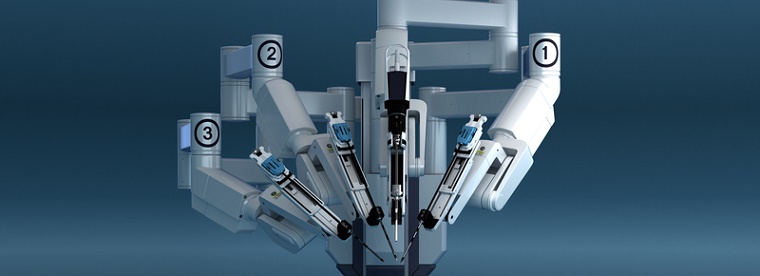After the initial shock of finding out that you have prostate cancer, you will probably think of multiple questions for the surgeon. A question we are frequently asked is whether surgery is the only course of action.
When surgery becomes the best option for removing prostate tumors, the next question typically is whether robotic prostate cancer surgery is an option what the risks are, and how long the recovery takes.
Robotic surgery is an innovative technique that can minimize bleeding, risk of infection and damage to surrounding tissues. Educating yourself about the benefits of robotic surgery may help allay your fears of the procedure, thereby reducing stress and worry, and enabling you to have a more positive treatment outcome.
The Risks of Traditional Prostate Surgery
The prostate gland is located in the deepest part of the male’s pelvis. This area is full of blood vessels and nerve structures that control sexual function. The prostate gland is also adjacent to the urinary sphincter, which controls urinary function. During traditional prostate tumor removal surgery, it can be difficult to identify the adjacent muscles, veins and nerves that tightly surround the prostate gland.
If these tissues, muscles or the sphincter are inadvertently damaged during surgery, it is likely that the patient will suffer from urinary incontinence or erectile dysfunction.
Robotic Prostate Cancer Surgery: Who Is a Candidate?
Robotic surgery uses tiny tools that can fit into a laparoscopic incision that is much smaller than the incision required for traditional procedures. The result is reduced ancillary damage to surrounding muscles and tissues, less bleeding, less chance of infection and a shortened recovery period. In fact, while recovery time from traditional surgery might require six to eight weeks, typically times with robotic surgery are about three weeks.
Not everyone is a candidate for robotic surgery. In fact, if you are like two out of three men diagnosed with slow-growing prostate cancer, you may not need surgery at all.
Factors that indicate viability for robotic prostate cancer surgery include:
- Being sexually active
- Having normal urinary function
- A life expectancy of 15 years or more.
Necessary Testing Before the Robotic Surgery
Your doctor will order a 3D MRI that uses the latest technology to identify the prostate gland, urinary sphincter, various nerves and blood vessels that surround the prostate gland. The MRI will provide an accurate view – or map – of the area in order to minimize collateral damage to surrounding tissues.
Doing Your Own Research
Your doctor can provide you with a name of a well-respected surgeon. Look for a surgeon with extensive experience in robotic surgeries and narrow your list to doctors affiliated with facilities that can prove consistent positive robotic surgery outcomes. Ask for data that specifically focuses on the facility’s success with this type of surgery. Most reputable facilities are happy to share this information with potential patients.
If, after your initial visit with the surgeon, you are still undecided about going ahead with the procedure, ask him or her for names of patients who have undergone this type of surgery and who have agreed to answer other surgical candidates’ questions. Being able to talk frankly with other men who have experienced the surgery might help to calm your fears.
Recovery From Robotic Surgery
Some types of slow-growing prostate tumors don’t require surgery at all. Instead, your doctors and specialists can actively observe them during regularly scheduled checkups. Other types of aggressive tumors may require traditional surgery. If your prostate cancer diagnosis and treatment protocol includes surgery, ask your surgeon if you are a candidate for robotic surgery.
In fact, if your prostate cancer is aggressive and threatens to spread to nearby organs or tissues, robotic surgery may be the best choice for you. The advantages of robotic surgery are many, including faster recovery and less downtime.
No one wants to have surgery, but take comfort in knowing that the latest technology enables you to have a shorter recovery time and less chance of potential side effects of the surgery.

